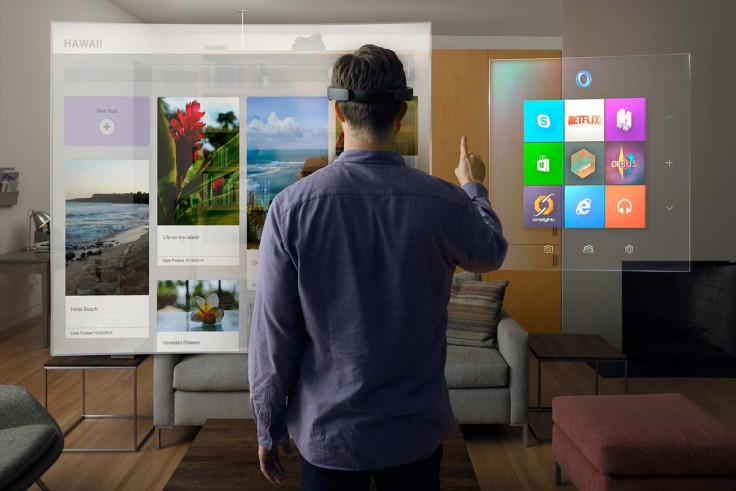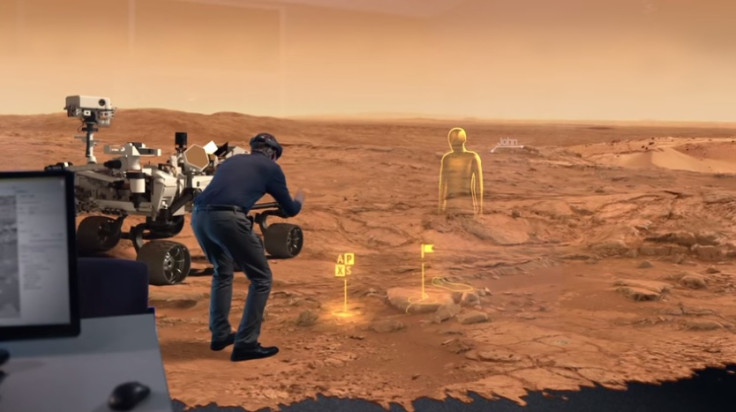Microsoft's HoloLens isn't just a moonshot, it's a Mars-shot - but needs aiming carefully

Google is famed for its moonshots, taking on the seemingly impossible to create products like Glass and autonomous cars, but Microsoft has gone even further. Project HoloLens is, almost literally, a Mars-shot.
Revealed alongside Windows 10, the new Spartan internet browser and the enormous, 84in Surface Hub, HoloLens came as a complete surprise. Whether this is praise for Microsoft's ability to keep a secret, or evidence that it's less of a rumour-magnet than Apple, doesn't matter.
The demonstrations by Microsoft and hands-on impressions from the press have been overwhelmingly positive. Sitting somewhere between the subtle, there-when-you-need it interface of Google Glass and the black-out, all-consuming experience of headsets like Oculus Rift and Samsung Gear VR, HoloLens blends virtual reality with what you can actually see.
'Nothing short of magical'
It can litter every surface of your lounge with a Minecraft game; it can project a Skype video chat wherever you look - or pin it to one place, like the wall next to your PC. HoloLens can project holograms of other users into your field of vision and it can let you drag your computer mouse off the screen and into a virtual environment behind your desk.

One demonstration showed how a Skype video chat can be used to help with household DIY. The wearer, instructed by a friend using a Surface Pro 3, pinned the video call to a wall next to a broken light switch. The friend could see from the wearer's point of view and annotate anything in front of them, such as labelling which wire is live and which tool to use.
Another demonstration used images taken by the Curiosity rover to create an immersive and explorable Martian landscape.
Early impressions describe HoloLens as "a big bet on the future of computing," an "augmented wonder world" and "nothing short of magical".
Make HoloLens an industry tool, not a consumer gadget
High praise indeed, but Microsoft must think carefully about how it pitches HoloLens to buyers. It may not be dead, but Glass hasn't become a success yet because Google pitched it as a smartphone accessory for consumers, when it was clear for all to see that selling it to industry made more sense.
Microsoft shouldn't be afraid of promoting HoloLens as a tool, not a gadget. A partnership already forged with Nasa and its Mars exploration programme suggests Microsoft is on the right track here, and it needs to continue pushing the benefits of holograms at the design and production industries. Playing Minecraft with HoloLens might be a fun demonstration of how the technology works, but show how it can aid surgeons, electricians, or graphic designers and the project will earn the credit it clearly deserves.

Going after industry sales rather than geeky consumers also reflects positively the kind of company Microsoft is. Where Google, Tesla and any number of billion-dollar Silicon Valley startups have the freedom to dream big - and fail if that's what is needed to progress - Microsoft is an older, more mature, and arguably less exciting firm.
A moonshot - in a different direction
It sells Office, Outlook, Powerpoint and Word; tools we all use because we have to, and which have been with many of us, mostly unchanged, for as long as we can remember. Microsoft and Windows are there to help us get work done, leaving the frills, the polish and the jaw-dropping to younger, fitter and more carefree rivals.
But with Satya Nadella at the helm, Microsoft has renewed energy and the confidence it needs to try something bold and different. This week Microsoft proved it can dare to dream as big as anyone, I just hope it knows to aim its moonshot in a different direction.
© Copyright IBTimes 2025. All rights reserved.






















